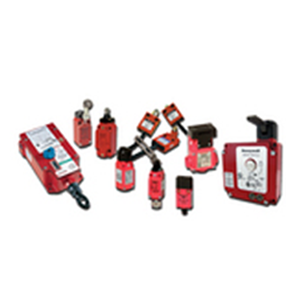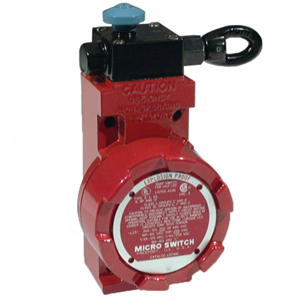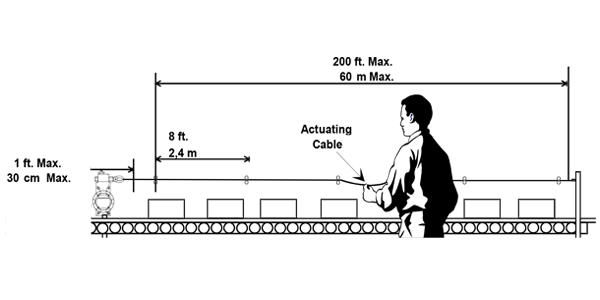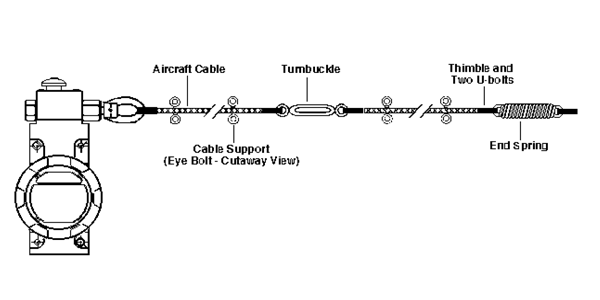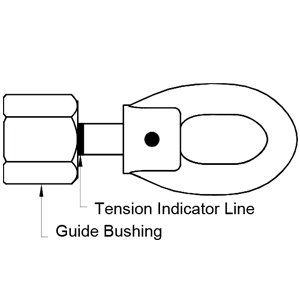|
Attributes
|
compact housing size, standard IEC 20 mm mounting
|
common footprint safety switch for multiple applicability;
multiple contacts, multiple key and wiring entry points
|
heavy duty metal body keyed interlock switch designed for
large doors and cages
|
|
Potential applications
|
small doors and apertures
|
small/medium doors and apertures
|
arge, heavy door cage and gate applications
|
|
Housing
|
glass-filled polyester
|
glass-filled polyester
|
zinc, epoxy coated
|
|
Approvals
|
cULus, CE, S-mark, SIL 3 capable
|
cULus, CE, CCC, S-mark, SIL 3 capable
|
UL, CSA, CE, SIL 3 capable
|
|
Sealing
|
IP66/IP67; NEMA 1, 4X (indoor), 12, 13
|
IP67; NEMA 1, 4X (indoor use only), 12, 13
|
IP67; NEMA 1, 4, 12, 13
|
|
Contacts
|
silver
|
silver
|
silver, gold
|
|
Circuitry
(double break
contacts)
|
• 1NC 1NO snap action
• 1NC 1NO slow action BBM
• 2NC slow action
|
• 2NC 1NO slow action BBM
• 3NC slow action
|
• 1NC 1NO snap action
• 2NC 2NO snap action
• 1NC 1NO slow action BBM
• 1NC 1NO slow action MBB
• 2NC 1NO slow action BBM
• 2NC 2NO slow action BBM
• 3NC 1NO slow action BBM
• 2NC slow action
• 4NC slow action
|
|
Differentiator
|
small MIN-DIN footprint; simple wiring and mounting;
double insulated
|
one switch stocking for multiple contact, key entry, and
wiring application combinations; large wiring cavity
|
unique friction feature for key retention; rugged design
withstands vibration, harsh environments, and provides
long-term durability (tested 15 million cycles)
|
|
Measurements (less
levers) H x W x D
|
95,7 mm x 30,5 mm x 32,9 mm
[3.77 in x 1.20 in x 1.30 in]
|
90,0 mm x 64,0 mm x 30,0 mm
[3.55 in x 2.52 in x 1.18 in]
|
121,6 mm x 42 mm x 42,6 mm
[1.79 in x 1.652 in x 1.68 in]
|
|
Temperature
|
-25 °C to 85 °C [-13 °F to 185 °F]
|
-25 °C to 70 °C [-13 °F to 158 °F]
|
-25 °C to 85 °C [-13 °F to 185 °F]
|
|
Electrical rating
|
AC15, A300/A600; DC13, Q300
|
AC15, A600; DC13, Q300
|
AC15, A300/A600; DC13, Q300
|
|
Features
|
medium duty switch covers most common 1NC/1NO and
2NC applications key entry from top and front
|
multi-use, multi-option; up to 3 contacts for additional
monitoring; 4 key head entries; knock-out points for wiring
entry; double insulated body; rigid and flexible key options
available
|
top or side entry lockout device options available; LED
indicator; up to four contacts; positive opening NC contacts
|
